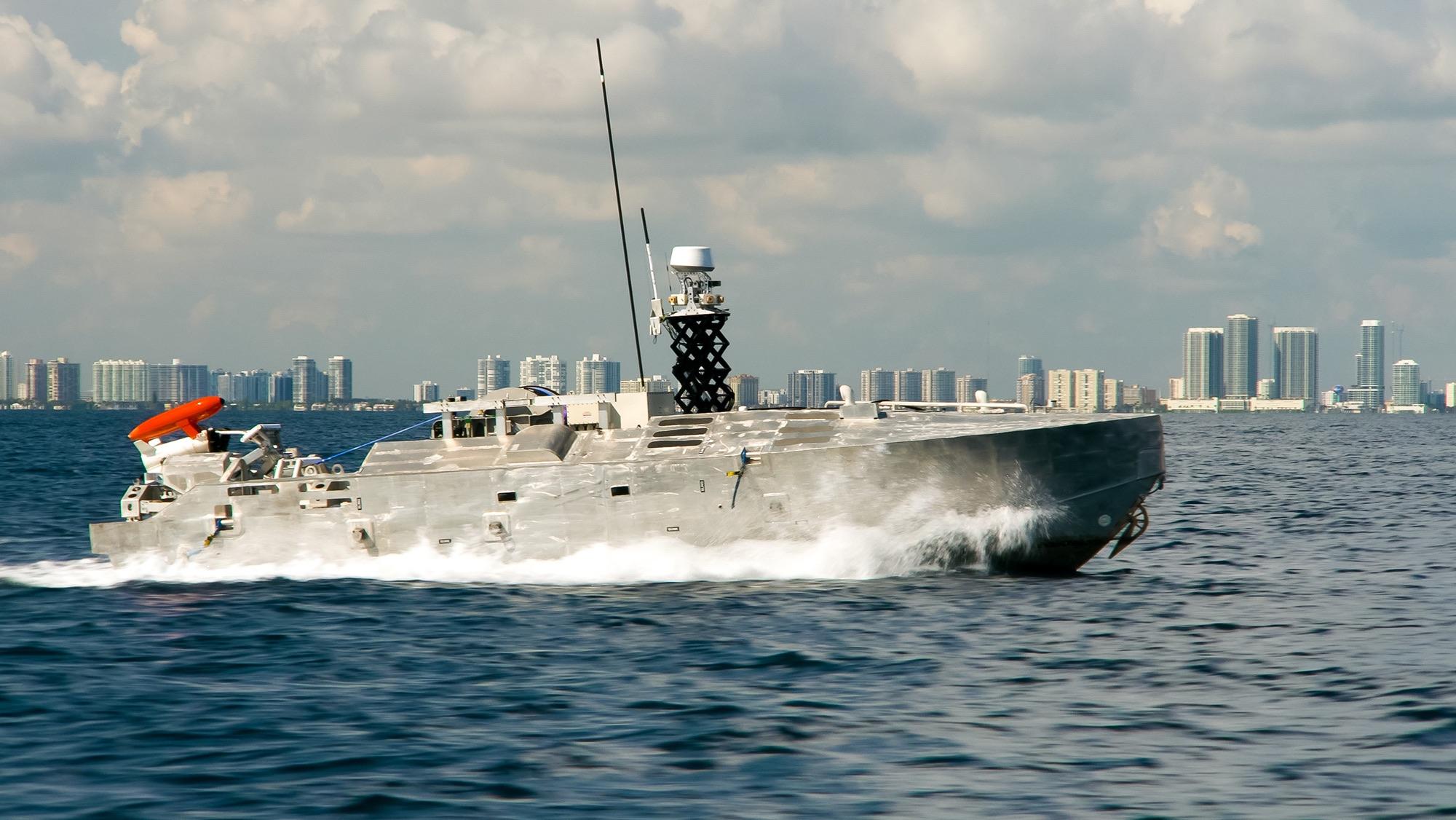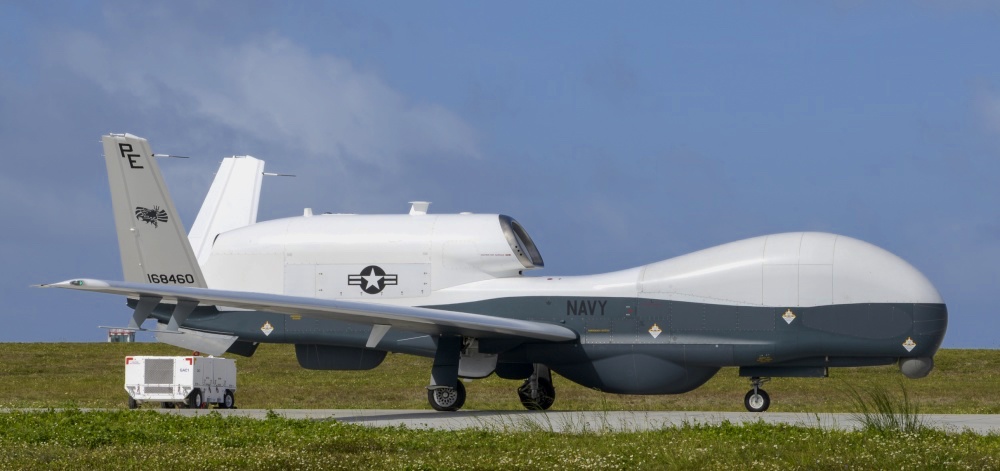//keep unread//hide
Early next year, U.S. Pacific Fleet will assemble the unmanned systems the Navy has deployed to the Indo-Pacific for an exercise to serve as an early marker on integrating unmanned platforms into the Navy.
The battle problem will mix and match the unmanned systems currently operating in the Pacific – a combination of early developmental undersea, surface and more mature aerial unmanned systems – for a scenario that will test the current utility of the assets now in the fleet, Rear Adm. Robert Gaucher, director of maritime headquarters at U.S. Pacific Fleet said on Tuesday at the Association for Unmanned Vehicle Systems International’s (AUVSI) annual defense conference.
“We’re shooting for early 2021 to be able to run a fleet battle problem that is centered on unmanned,” Gaucher said. “It will be on the sea, above the sea and under the sea.”
The Navy has been slowly deploying unmanned systems in fits and starts as it continues to develop a firmer outlook on how it will use the systems in the future. Far from armed and autonomous systems, the Navy has mostly small-scale unmanned surface and subsurface systems in the region. The Navy’s Sea Hunter surface vehicle has been testing with the Navy’s Surface Development Squadron 1. USNI News previously reportedSea Hunter Medium USV would operate with a CSG later this year. In the air, the Navy deployed the MQ-4 Triton long-range surveillance UAV to Guam. The Navy’s explosive ordnance disposal (EOD) have deployed with Mk 18 Mod 1 and 2 Kingfish UUV. Gaucher mentioned the Navy had deployed a modified Iver3 UUV from nuclear attack boat USS Mississippi(SSN-782).
Gaucher said the planning was still in the early stages but would involve at-sea and ashore portions and focus on command and control tests as part of the battle problem.
Fleet battle problems, reintroduced to PACFLEET in 2018 by former commander Adm. Scott Swift, are scenarios where an operational unit is given a training mission designed to test a commander and the crew on an aspect of high-end naval warfare. The goal is to see how well trained and deployed sailors handle the challenge cooked up by the exercise planners. Planners have adopted a “Fight to Hawaii” approach, in which carrier strike groups leaving San Diego, Calif., use the week or more transit time to work the battle problem. East Coast deployers run similar exercises during Atlantic transits.
The announcement of the exercise comes as the Navy works to gradually start to testing the capabilities of the unmanned systems and integrate them within the fleet.
“Everyone wants to talk about the extreme case. We are a long way from the extreme case. What we need to do is get things out there and take these baby steps along the way,” Vice Adm. Ron Boxall, director of force structure, resources and assessment (J8) on the Joint Staff, said in the same session.
“We have to be able to give confidence that we are proceeding at a good pace, but not to the point of stupidity… Because a lot of these platforms are smaller, we can demonstrate things on a much smaller scale as we bring in both capacity and capability further on down the cycle.”
Ultimately, the idea is to create an unmanned system that shares the burden of the manned ships in the fleet.
“I want to create dilemmas for the adversary and I want to increase lethality,” Gaucher said.
“I want to be able to put an unmanned surface ship inside the adversary’s denied areas. If I lose it, I’m losing a much less expensive ship and I’m not losing American lives, but I’m still creating a problem — whether I’m making them shoot it and I’m finding out where they are … or I’m making them waste a weapon on it or I’m getting a couple of shots off before I lose it.”
To get there, Boxall and Gaucher stressed the need for more testing. Gaucher said his goal, for now, is to, “aim small, miss small.”
“There’s a lot of people out there that, you know, unmanned is kind of this neat thing until you have to start authorizing a robot to go do something,” he said. “All of a sudden you have a lot of questions.”
Elements inside the Navy and lawmakers have been cautious of the service committing too heavily to unmanned systems before proving basic reliability.
“We tried to go and plan missions for another combatant commander who was not familiar with unmanned vehicles. The questions came up like: ‘Well, how many times have you done that? How many hours have you done it? How many times has it failed when it failed? What happened?’,” Gaucher said.
“Those questions all come on the table. So the more that we get to operate with the fleet and answer those questions and keep the stopwatches going and get our white lab coats out with our clipboards and take notes, we can feed all that [data] back.”
In drafting its Fiscal Year 2021 defense policy bill, the Senate Armed Services Committee included report language that would require the Navy to test subsystems for both the Large Unmanned Surface Vehicle (LUSV) and Medium Unmanned Surface Vehicle (MUSV) before either program could achieve the milestone B acquisition benchmark.
While both the House and Senate have each passed their versions of the policy legislation, Congress is still working through conference negotiations for the final bill.
“This is where the Hill has had some issues: ‘How do you know when it’s good enough?’,” Boxall said.













No comments:
Post a Comment
How did you like the post, leave a comment. I would appreciate hearing from you all. Best wishes from JC's Naval, Maritime and Military News